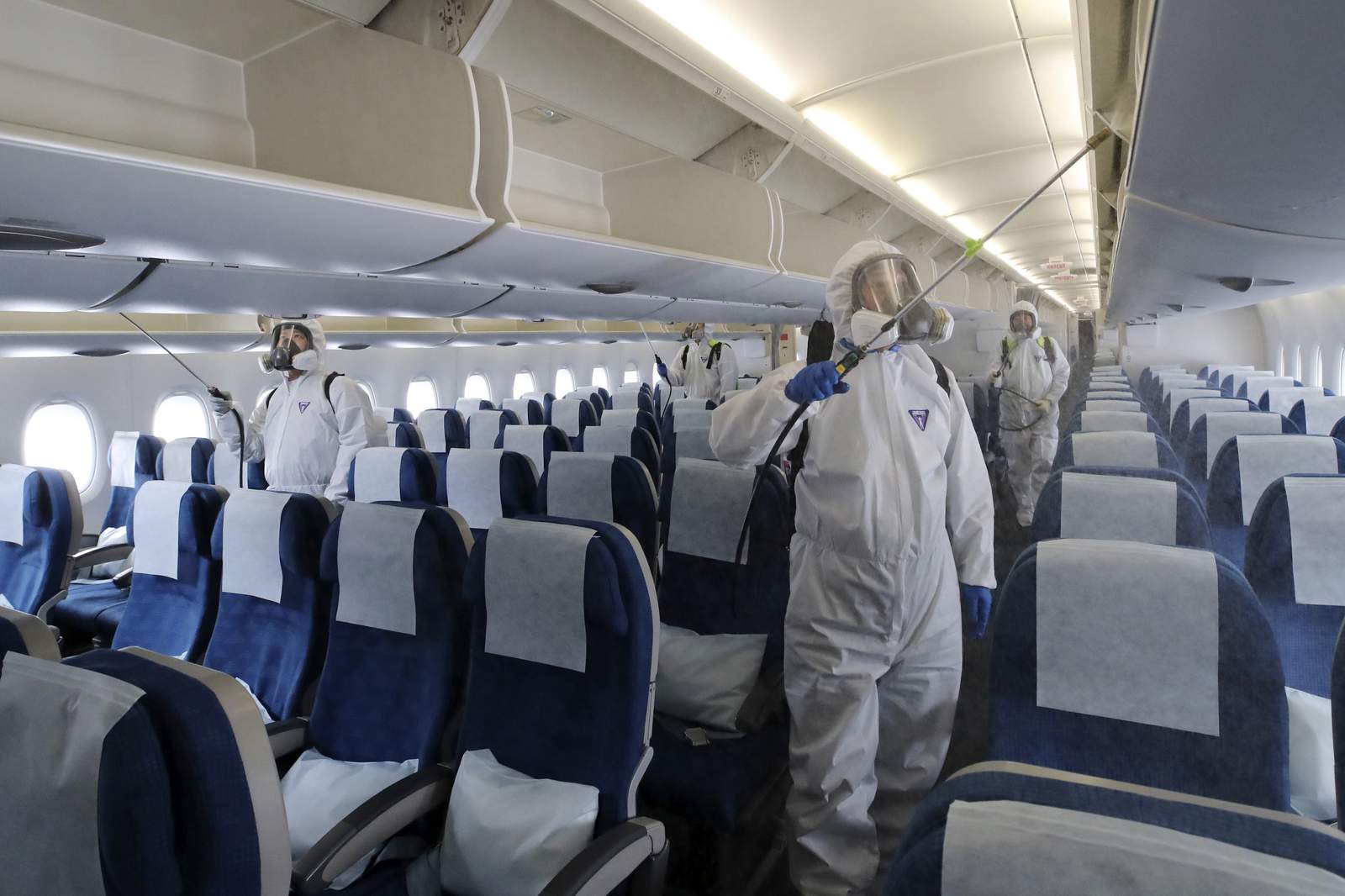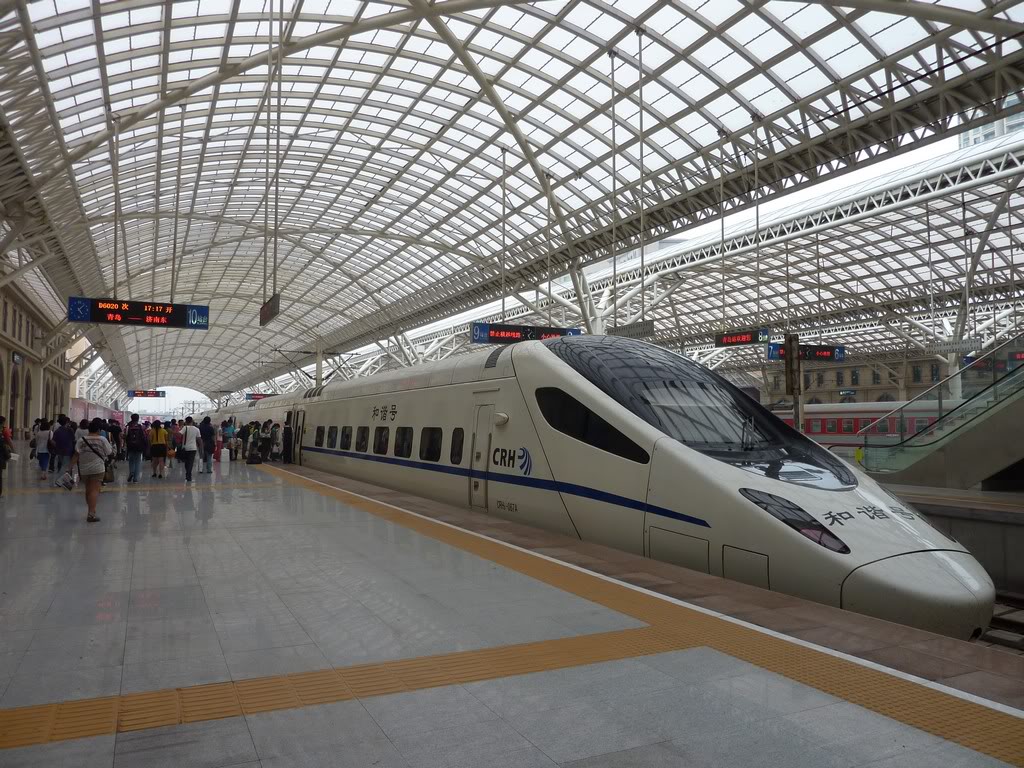
A surveillance state might not be an ideal place to live, but it sure makes for great epidemiology. In a Big Brother tour-de-force, Chinese epidemiologists have estimated the risk of traveling on their high-speed train system. The US still doesn’t have anything that could be called high speed rail by global standards, but this analysis offers an excellent proxy for air travel risk in the COVID era.
THE STUDY
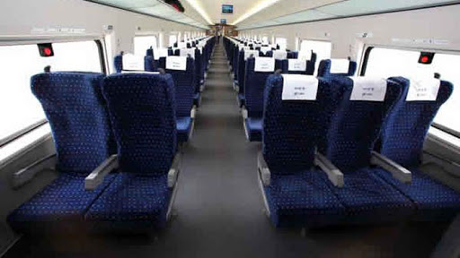
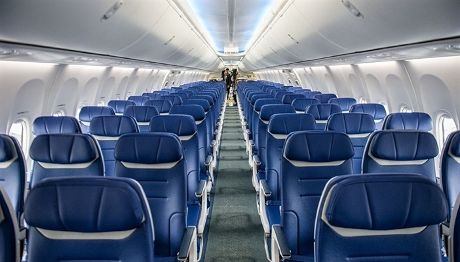
With the vast information resources of the Chinese government at their disposal, Chinese epidemiologists were able to identify 2,568 confirmed cases of COVID-19 who had travelled between December 19 and March 6 on the high-speed G-train. The bullet train system carries 2 billion passengers per year at a top speed of 350 km/hr (220 mph). The train’s cabin configuration is similar to that of a typical intermediate range commercial plane like the 737. They were also able to track 72,093 co-travelers, identifying the exact seat location of 234 secondary cases. (A secondary case is one that occurs after exposure to the index case).
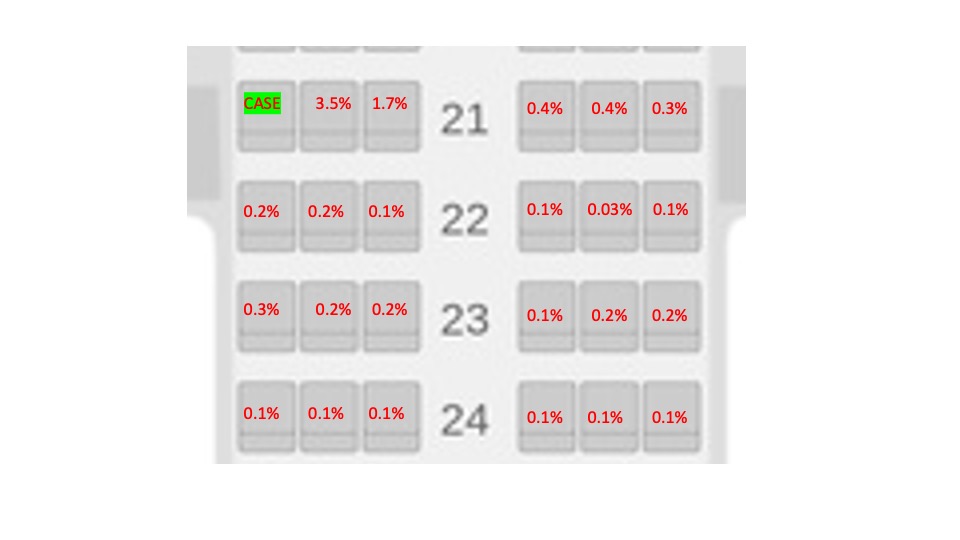
The risk of contracting COVID-19 rose sharply with proximity to an index case and with duration of travel. The incidence of disease or secondary attack rate (SAR) for those sitting next to a person infected with SARS-CoV-2 was 3.5%. This estimate of risk drops in half if you are sitting two seats from a case. It drops by a factor of ten if you are sitting across the aisle. Sitting a row away drops the risk even further, by more than 90%. Note that the study did not differentiate between someone sitting behind a case or in front of a case. In other words, the risk for those in front of a case would mirror the rows behind the case.
The Risk of a Long flight
The SAR also increases steadily with the time spent traveling with the index case. Those who spent more than six hours seated next to an index case had a 10% chance of contracting COVID-19. For those located farther away from the index case, risk jumps sharply after four hours of co-travel. The risk for those next to the case are due to large droplets emitted by the case. Those droplets are far less likely to reach passengers seated farther away. Ultra-fine droplets, known as aerosols, may reach more distant passengers, but the number of viruses they transmit is far lower. The upturn in risk with longer exposure suggests that aerosols pose a risk with long term exposure.
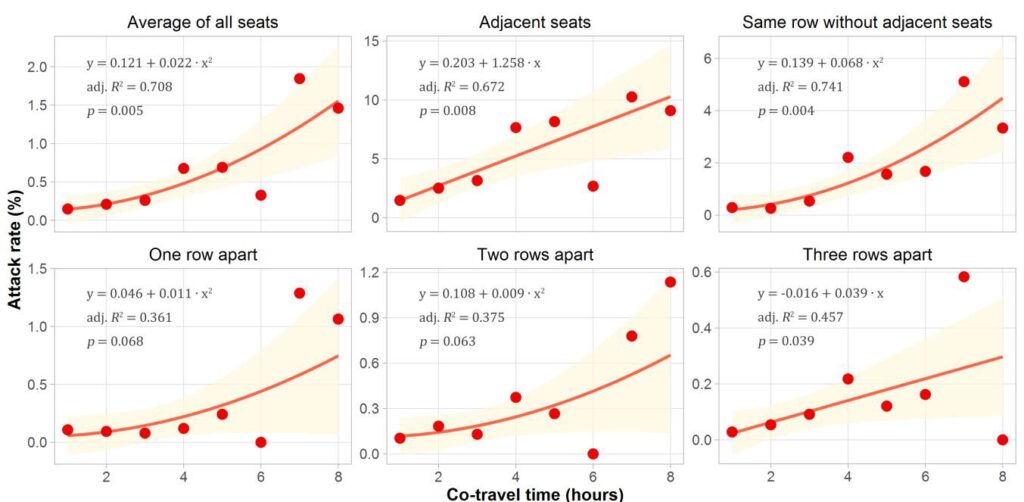
Passengers who took the seat just vacated by the index case had a secondary attack rate of only 0.075%. Again, passengers sitting next to the case had almost 50 times that risk. In other words the risk of touching all the surfaces just contaminated by a case (fomites) is far less than breathing next to them. This suggests that airborne transmission is far more important than transmission by fomites.
Given the close similarity between the cabins of the Chinese G-train and an airplane, the results of this study should provide a relatively precise estimate of air travel risk to passengers posed by proximity to a COVID-19 case. There are a couple of key questions to ask: 1.) To what extent were the Chinese travelers wearing masks? and 2.) What is the likelihood that any given passenger has COVID-19?
what is your air travel risk?
The authors do not explicitly address the question of mask use among passengers. In late December, it is almost certain that passengers were not wearing masks. Images from the time suggest that mask use was widespread, if not universal, by the end of January. In other words, for most, but not all, of the study period. That means these numbers are likely to reflect the upper bound of risk to travelers.
If we know the risk associated with sitting near a person with COVID-19, we only need to know the probability of any given person having COVID-19 to estimate the air travel risk. The current rate of diagnosis of new cases in the US is about 50,000 per day. Assume there is a five-day window during which an infected person could be both spreading the virus and traveling. That implies there are 250,000 people in the US who might be infected and traveling at any given time. With a current US population of 320 million people, there is a 0.75% chance that any particular person might be spreading the virus. Which means, if the airline is not filling middle seats, your chance of picking up COVID on an average, 3-4 hour flight in the US would be less than 1 in 50,000. This is conservative, so the actual air travel risk is likely to be lower, less than 1 in 10,000, probably closer to 1 in 100,000. The risk will rise on longer flights and on full flights. [CORRECTION: A reader, Nathan Hu Williamson, has correctly pointed out that I have not included the risk of infected passengers in other seats. If I accumulate the risk from a single passenger in any of the other possible positions, the total risk rises to 4 in 10,000 (assuming middle seats are empty). Again, this is likely to be conservative if everyone is wearing masks since mask wearing was not universal in the early stages of the pandemic in China.]
implications for mass transit
Subway riders take heart. The Chinese study suggests that the risk of contracting COVID-19 on a flight less than 4 hours is extremely low. This implies that travel on local mass transit, in which everyone is masked and there is space between passengers, is even lower given the relatively brief duration of the ride. This risk drops steadily as the rate of disease in the community drops. Riding the subway in New York City with a spacing of one seat between passengers would result in an individual risk of about 1 in a million for a 20 minute ride. So there’s hope for all forms of public transport as the prevalence of COVID-19 drops, airplanes, subways, buses, and, maybe someday, we can even have safe high speed rail in the US.
